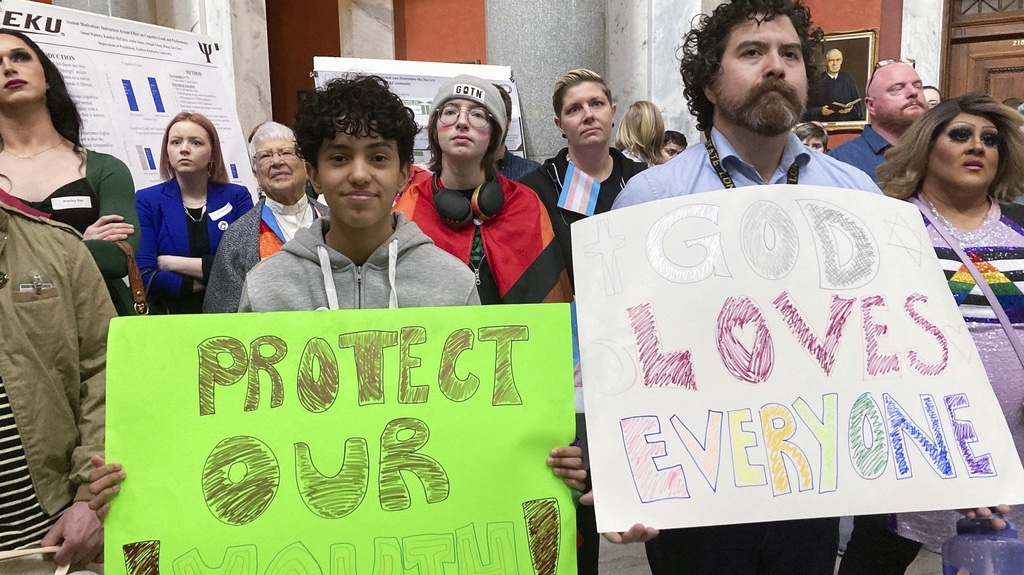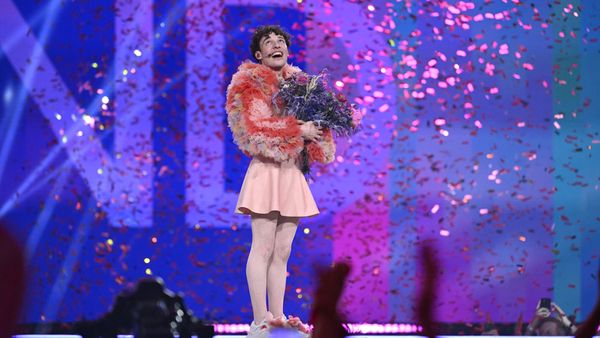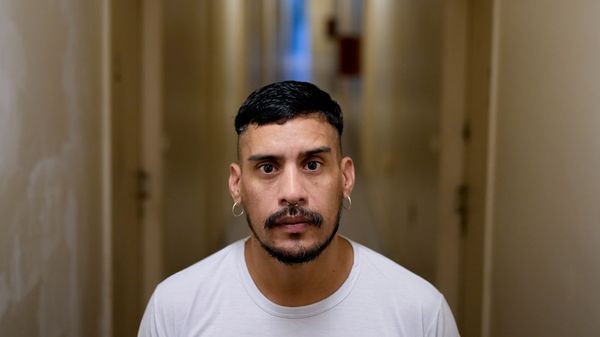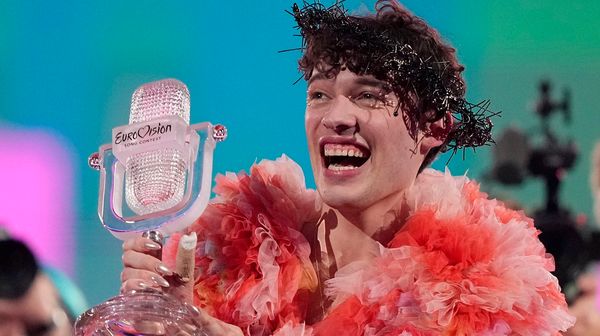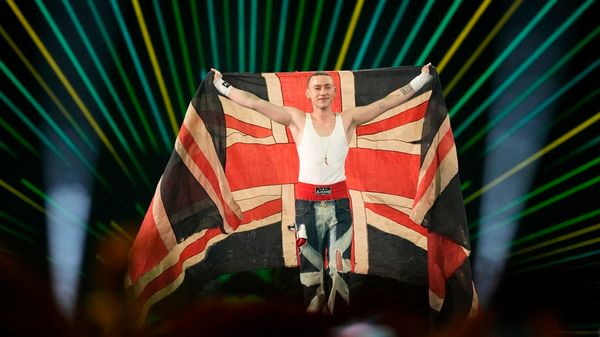November 27, 2012
Spanning the Brooklyn Bridge to Remember Those Lost to Trans Violence
David Perry READ TIME: 6 MIN.
With somber moments of silence and bursts of cautious enthusiasm, New Yorkers marked the 14th annual Transgender Day of Remembrance Nov. 20 with events throughout the city. Trans people, their friends, allies, and advocates came to remember those of the community who have passed on, and to steel their resolve for the continuing struggle in the courts and mainstream life for full equality.
"The challenges facing the transgender community have many faces," says Brooklyn Community Pride Center Executive Director Erin Drinkwater, who organized a march across the Brooklyn Bridge and a vigil at City Hall for the TDoR vigil in Brooklyn. "They include discrimination manifesting itself in accessing housing, employment, credit, education and accessing adequate and culturally competent healthcare. The transgender community faces widespread transphobia simply because of who they are, and are more likely to be the victim of a violent crime."
Springing from the efforts of Boston-based trans activist Gwendolyn Ann Smith, "TDoR" began as small vigil in response to the still-unsolved murder of Rita Hester, a transgender African American woman, in 1998. The day is now observed in over 185 cities in more than 20 countries, and is the culmination of Transgender Awareness Week.
While Chaz Bono, "Cloud Atlas" director Lana Wachowski, beauty-queen Jenna Talackova and "pregnant man" Thomas Beatie have shed more light than ever before on trans life, outside the spotlight, trans people continue to run the friendless gauntlet of discrimination, fear, misunderstanding, legal apathy and threats to their lives that gays and lesbians themselves faced 30 years ago.
Lourdes Hunter, the keynote speaker at the TDoR event held at Manhattan's Audre Lorde Project, is blunter about the hardships trans people face.
"Many are ostracized by family and community and are forced to engage in survival activities, or are subjected to unsafe environments and relationships," said Hunter. "As a consequence, homelessness, untreated health issues, higher rates of incarceration, drug use and abuse and street-based sex work are just a few of the challenges many trans folk, in particular, trans women of color, face everyday."
Anti-trans violence is a constant presence. A common feature to all TDoR ceremonies is a "wall of memory" dedicated to trans people who have been murdered. A quick read highlights not only lives snuffed out, but also the particularly vicious means, from knife attacks to stoning.
Trans-Respect versus Trans-Phobia (TvT) is an organization that monitors aggression against the trans community; the March 2012 update records 816 reported killings of trans people in 55 countries worldwide from January 1, 2008, to December 31, 2011, with a spike appearing in the last four years.
In 2008, 141 cases were logged, 213 in 2009, 214 in 2010 cases, and 248 in 2011. These numbers reflect only those incidents officially recorded; TvT and others believe the real number to be much higher.
It was for such statistics that the Obama Administration has taken a more forthright approach to the trans community. On Nov. 21, trans leaders and members of California's Trans People of Color Coalition (TPOCC) met with White House staffers to highlight issues of importance to transgender people apart from that of LGBs.
Many activists see the "T" in LGBTQ as a marriage of convenience; the trans experience is not necessarily one of sexual orientation. In "Both Sides Now: One Man's Journey Through Womanhood," author Dhillon Khosla describes his transition from female to male and makes clear that his attraction to women remained constant, and wasn't the issue to begin with.
Moreover, transgender and transsexual describe very different sectors. Add intersex people and gender noncomformists and picture becomes even murkier for a population at large -- gay, straight and bisexual -- accustomed to gender in male or female absolutes.
"With or without surgery and hormone treatments, transgender individuals do not conform to social constructions of gender," explained Hunter, who identifies as gender nonconforming, a person who does not conform to social constructions of gender. "A transsexual," she continues, "is someone who has a dysphoria with their assigned gender and has a strong desire to align their body with the gender they identify with. A person who is intersex was born with both male and female genitalia." (Hermaphrodite is considered insulting.)
While discrimination overwhelmingly originates from the heterosexual population, ironically, the L's, G's, B's, and Q's themselves can be part of the problem. Several trans advocates see the gay and lesbian population gaining legal ground by pushing themselves up off from trans people.
Trans activist Ashley Love points out such in a recent episode of "RuPaul's Drag Race," where comedienne Vicki Lawrence and RuPaul equated an M-to-F transsexual to a drag queen with "twenty-five thousand dollars and a good surgeon," illustrating the cavalier insensitivity trans people can face as an often-marginalized population within an often-marginalized population. New York nightlife stalwart Pearl Martin, a.k.a. Miss Pearl, notes that many gay men do not appreciate transgender women in gay clubs.
"The gay and lesbian leadership believes in 'trickle down' policies," observed Hunter, "and would rather secure rights for themselves and expect trans folk to wait their turn."
Several pro-gay and lesbian protections leave out trans people: Trans people still cannot serve in the military (any trans state is considered a mental disorder); the Gender Expression Non-Discrimination Act (GENDA) languishes in the New York State legislature; and police departments nationwide do not mandate trans sensitivity training. Martin recounts how she was arrested by the NYPD on a charge of prostitution while returning home from one of her shows.
"There is a lot of prejudice and hidden issues amongst the police officers, particularly towards transgender women and transgender women of color. There was once a lot of prostitution by trans women of color, but it's not right to put everybody in that basket," said Martin.
Drinkwater affirmed that the transgender population fits into the LGB community, saying, "From the beginning of the movement, the transgender community has been at the forefront."
But in the progress forward, it is wise to turn around to see who lingers behind.
David Perry is a freelance travel and news journalist. In addition to EDGE, his work has appeared on ChinaTopix, Thrillist, and in Next Magazine and Steele Luxury Travel among others. Follow him on Twitter at @GhastEald.

